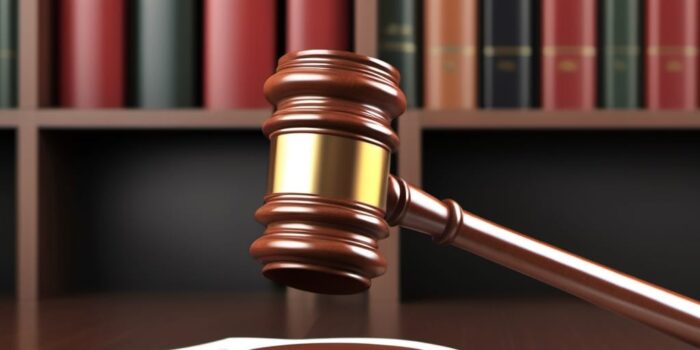In the realm of law, the term ‘Cause of Action’ holds significant importance. It is the foundation of any legal claim or lawsuit. Understanding this term is crucial for anyone involved in legal proceedings, whether as a plaintiff, defendant, or legal professional. This article will delve into the intricate details of ‘Cause of Action’, explaining its meaning, significance, types, elements, and its role in various legal contexts.
Before we proceed, it’s important to note that the term ‘Cause of Action’ may vary in its interpretation and application across different jurisdictions. However, the fundamental concept remains the same. It refers to a set of facts or legal theory that gives an individual or entity the right to seek a legal remedy through the court. Now, let’s explore this term in depth.
Definition of Cause of Action
The ‘Cause of Action’ is a legal term that refers to the reason why a plaintiff is bringing a lawsuit against a defendant. It is the legal theory and the set of facts that support a plaintiff’s claim against a defendant. The cause of action is the heart of the lawsuit, without which the case cannot proceed.
It’s important to understand that a cause of action is not the same as a claim or a complaint. While a claim or complaint can be based on multiple causes of action, each cause of action is a distinct legal theory that must be proven separately. For example, in a personal injury lawsuit, the plaintiff may have causes of action for negligence, battery, and intentional infliction of emotional distress. Each of these causes of action requires proof of different elements.
Elements of a Cause of Action
Each cause of action has specific elements that the plaintiff must prove to succeed in the lawsuit. These elements vary depending on the legal theory underlying the cause of action. For example, a cause of action for negligence requires the plaintiff to prove that the defendant owed a duty of care to the plaintiff, that the defendant breached that duty, that the plaintiff suffered harm, and that the defendant’s breach caused the plaintiff’s harm.
Understanding the elements of a cause of action is crucial for both plaintiffs and defendants. For plaintiffs, it guides the collection of evidence and the presentation of the case. For defendants, it provides a roadmap for challenging the plaintiff’s case, either by arguing that the plaintiff has not proven one or more elements or by presenting evidence that contradicts the plaintiff’s evidence.
Types of Causes of Action
There are numerous types of causes of action, each corresponding to a different area of law. Some common types of causes of action include breach of contract, negligence, fraud, defamation, and trespass. Each of these causes of action has its own unique elements and legal theories.
For example, a cause of action for breach of contract requires the plaintiff to prove that a contract existed between the plaintiff and the defendant, that the defendant breached the contract, and that the plaintiff suffered harm as a result. On the other hand, a cause of action for defamation requires the plaintiff to prove that the defendant made a false statement about the plaintiff, that the statement was published to a third party, and that the plaintiff’s reputation was harmed as a result.
Role of Cause of Action in Legal Proceedings
The cause of action plays a pivotal role in legal proceedings. It forms the basis of the plaintiff’s lawsuit and shapes the course of the litigation. From the initial filing of the complaint to the final judgment, the cause of action influences every aspect of the lawsuit.
At the outset, the cause of action determines the jurisdiction and venue of the lawsuit. Certain causes of action can only be brought in specific courts. For example, federal courts have exclusive jurisdiction over certain causes of action, such as patent infringement and federal antitrust violations. Similarly, the cause of action can affect the venue, or location, of the lawsuit. For example, a cause of action for personal injury is typically brought in the county where the injury occurred.
Impact on Discovery and Evidence
The cause of action also influences the discovery process, which is the pre-trial phase in a lawsuit where each party can obtain evidence from the opposing party. The scope of discovery is generally limited to matters that are relevant to the cause of action. For example, in a personal injury lawsuit, the plaintiff may seek medical records, accident reports, and witness statements that are relevant to the cause of action for negligence.
Furthermore, the cause of action determines the type of evidence that can be presented at trial. Certain types of evidence may be admissible for one cause of action but not for another. For example, in a defamation lawsuit, evidence of the defendant’s reputation for truthfulness may be admissible, but such evidence would not be relevant in a breach of contract lawsuit.
Effect on Remedies
The cause of action also affects the remedies that the plaintiff can seek. Different causes of action allow for different types of remedies. For example, a cause of action for breach of contract may allow the plaintiff to recover damages for the loss suffered due to the breach, while a cause of action for trespass may allow the plaintiff to seek an injunction to prevent further trespass.
In addition, the cause of action can impact the amount of damages that the plaintiff can recover. For example, in a personal injury lawsuit, the plaintiff may be able to recover damages for medical expenses, lost wages, and pain and suffering. However, in a defamation lawsuit, the plaintiff may also be able to recover damages for harm to reputation, which can be difficult to quantify.
Understanding Cause of Action in Different Legal Contexts
While the basic concept of cause of action remains the same, its application can vary significantly across different legal contexts. Let’s explore how cause of action is understood and applied in civil law, criminal law, and administrative law.
It’s important to note that while we often associate cause of action with civil lawsuits, the concept also has relevance in criminal and administrative law, albeit in a different form. In these contexts, cause of action may refer to the legal basis for prosecuting a crime or initiating an administrative action.
Cause of Action in Civil Law
In civil law, a cause of action refers to the legal theory and set of facts that give a plaintiff the right to sue a defendant for a civil wrong. The plaintiff must prove each element of the cause of action to succeed in the lawsuit. Civil causes of action can arise from a wide range of legal issues, including contracts, torts, property disputes, and family law matters.
For example, in a breach of contract lawsuit, the cause of action is the breach of contract itself. The plaintiff must prove that a contract existed, that the defendant breached the contract, and that the plaintiff suffered harm as a result. If the plaintiff can prove these elements, they can recover damages for the loss caused by the breach.
Cause of Action in Criminal Law
In criminal law, the concept of cause of action is slightly different. Here, the cause of action refers to the legal basis for prosecuting a crime. The prosecution must prove each element of the crime beyond a reasonable doubt to secure a conviction.
For example, in a prosecution for theft, the cause of action is the theft itself. The prosecution must prove that the defendant unlawfully took and carried away someone else’s property with the intent to permanently deprive the owner of it. If the prosecution can prove these elements, the defendant can be convicted and sentenced to punishment.
Cause of Action in Administrative Law
In administrative law, a cause of action refers to the legal basis for challenging an administrative action or decision. The petitioner must prove each element of the cause of action to succeed in the challenge.
For example, in a challenge to a regulatory decision, the cause of action may be that the decision was arbitrary and capricious. The petitioner must prove that the decision was not based on a consideration of the relevant factors and that there has been a clear error of judgment. If the petitioner can prove these elements, the court can set aside the decision and remand the case for further proceedings.
Conclusion
Understanding the concept of ‘Cause of Action’ is fundamental to the practice of law. It forms the basis of any legal claim or lawsuit, shaping the course of litigation from the initial filing to the final judgment. Whether you’re a plaintiff, defendant, or legal professional, a thorough understanding of this term can greatly enhance your ability to navigate the legal landscape.
Remember, the cause of action is more than just the reason for a lawsuit. It’s a complex legal concept that encompasses the legal theory, the facts supporting the claim, the elements that must be proven, and the remedies that can be sought. By comprehending these aspects, you’ll be better equipped to understand and participate in legal proceedings.
Start Your Legal Journey with Clear Legal
Now that you’re equipped with the knowledge of what a ‘Cause of Action’ entails, take the next step towards protecting your legal rights with Clear Legal. Our commitment to ethics, innovation, and quality ensures that you receive top-notch legal guidance tailored to your unique situation. Embrace the value-driven approach of Clear Legal and request a free consultation today to see how we can support you in navigating the complexities of the legal world.





